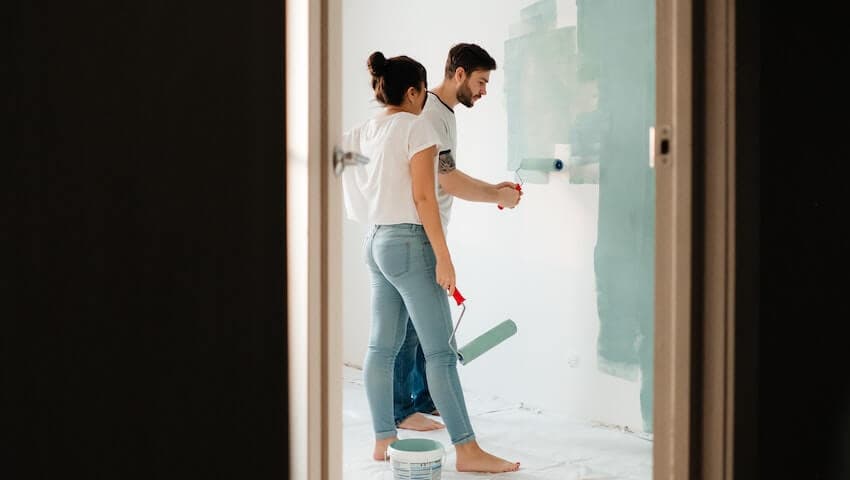6 Steps to Flip a House in Canada

Want to become a house flipper? Find out the six essential steps you must take in order to successfully flip a house in Canada.
Buying real estate is one of the largest investments most people will make in their entire lives. And with many regions in Canada having record-high property prices, the idea of being able to leverage the buying and selling of real estate for a profit is an enticing one.
Of course, when it comes to flipping houses, investors need to be careful with where they buy and how they spend their budget.
In this article, we’ll define house flipping and outline the six steps you should take when flipping a house in Canada, including:
Building your budget and schedule
Determining your desired neighbourhood
Hiring a real estate agent
Purchasing your property
Repairing and renovating your house
Preparing to sell your property
Need Builder’s RiskInsurance?
What Is House Flipping?
Flipping a house is when a real estate investor purchases a property with the intention of fixing it up and selling it soon after. House flippers may acquire multiple investment properties at once, or buy a single home at a time.
How to Flip a House in Canada
If you’d like to start flipping houses, you may be wondering how it all works. Below, we outline the six major steps you’ll need to take in order to successfully flip properties in Canada.
1. Build your budget and schedule
How much does it cost to flip a house? Well, before you start flipping properties, it’s important to note that this process will likely take more than just equity. In fact, you’ll need to determine the amount of time and money in order to turn a profit.
With that in mind, the first step is to identify the average cost of flipping homes in your area, as well as the typical timeline to complete this type of project.
While determining your scheduling will be unique for each house flipper, below are a few important expenses that you should consider as you put together your budget.
Purchase price: This is the amount you’ll pay for the property itself.
Closing costs: These are the fees that you’ll shell out in addition to the property’s price to complete your real estate transaction.
Insurance expenses: As the owner of the property, you’ll need home insurance, and once you begin repairs, you’ll also need builder’s risk insurance.
Construction or renovation costs: This is what you’ll pay to update your fixer upper.
Property taxes: These are the fees that you’ll owe as the owner of the home.
Selling costs: When you put your home on the market, you’ll then be responsible for the expenses related to selling, such as real estate agent fees and staging expenses.
When determining your budget, you’ll also want to figure out if you can afford to buy a house with cash, instead of with the support of a mortgage loan. This can make your offer more attractive to sellers, and help prevent you from losing money down the line when you sell.
Need Builder’s RiskInsurance?
2. Determine your desired neighbourhood
If this isn’t your first time purchasing a home or dabbling in the real estate market, you’ve likely heard the old adage: “Location, location, location!” This refers to buying property in a desirable area, which is especially important when it comes to real estate investing.So, before you purchase your property, research the market in the region that you’re considering. This will help you uncover comparable property values in the area.You’ll also want to have a good understanding of the type of buyer interested in purchasing homes in the neighbourhood you decide on. This way, you’ll be able to align the upgrades of your future property with the demographic buying in that area.
3. Hire a real estate agent
Once you’ve identified where you’d like to purchase your investment property, find a real estate agent familiar with the area. Having the expertise of an agent can help you find the right type of property for house flipping.
4. Purchase your property
The next step is the actual purchase of the home you’d like to flip. As mentioned above, if you can pay in cash, make sure to communicate that. This can help increase the odds of a seller accepting your offer.
If you need to take out a mortgage to buy the home, however, you’ll want to have everything lined up with your lender to ensure a smooth completion of the sale.
Before you take possession, you’ll also want to acquire your home insurance, so that your investment property is protected in case of accidents, damages, or theft.
Related: What does home insurance cover
Need Builder’s RiskInsurance?
5. Repair and reno your house
Now that you’ve purchased the property you’d like to flip, it’s time to start repairing the home.
If you’re not doing the renovations yourself, the first thing you’ll want to do is hire a general contractor or construction company. Make sure that whomever you choose to work with is covered with the proper trades and contractors insurance before they start the job.
As a reminder, you or your contractor will also need to acquire builder’s risk insurance for the duration of the construction project to prevent any gaps in coverage.
6. Prepare to sell your property
Now that you’ve fixed up your property, it’s time to get ready to put it on the market! Here are a few things to consider as you prep to sell:
Stage your home: Work with a staging company to decorate and furnish your house. This is an important step, especially if you’re not living there, since empty spaces can be unappealing to potential buyers.
Hire an agent: If you enjoyed working with the real estate agent who helped you find the house, consider hiring them again to sell your property. They’ll already know all about the home, and having a trusting relationship with your agent can make the process less stressful.
Once you’ve gotten your property ready to go, it’s time to get your listing on the market. Good luck, and happy house flipping!
APOLLO Has You Covered
Get the protection you need in minutes with custom Builder’s Risk Insurance from APOLLO.
Originally published September 26, 2022, updated October 17, 2024
Back to APOLLO MagazineLooking for tenant insurance?
Get no-nonsense coverage that's the best value for your money. Purchase policies from your computer or phone, receive your documents instantly, and save when you buy online.
4.7 rating
Looking for tenant insurance?
Get no-nonsense coverage that's the best value for your money. Purchase policies from your computer or phone, receive your documents instantly, and save when you buy online.
4.7 rating
Relevant articles
Getting insured is as easy as 1 - 2 - 3

Tell us (very little) about yourself
Just tell us your address, your name, email and phone number. And that's it. We'll give you a price in less than a minute.

Pay online easily and securely
You can choose to pay monthly or save money by paying for the entire year in one easy payment.

Get your documents in your inbox - instantly
As soon as you complete your purchase, you'll find your proof of insurance and policy documents waiting for you in your inbox.
Get covered today - it couldn’t be easier
We’ve provided more than 1,000,000 quotes to Canadians just like you. Give it a try!



